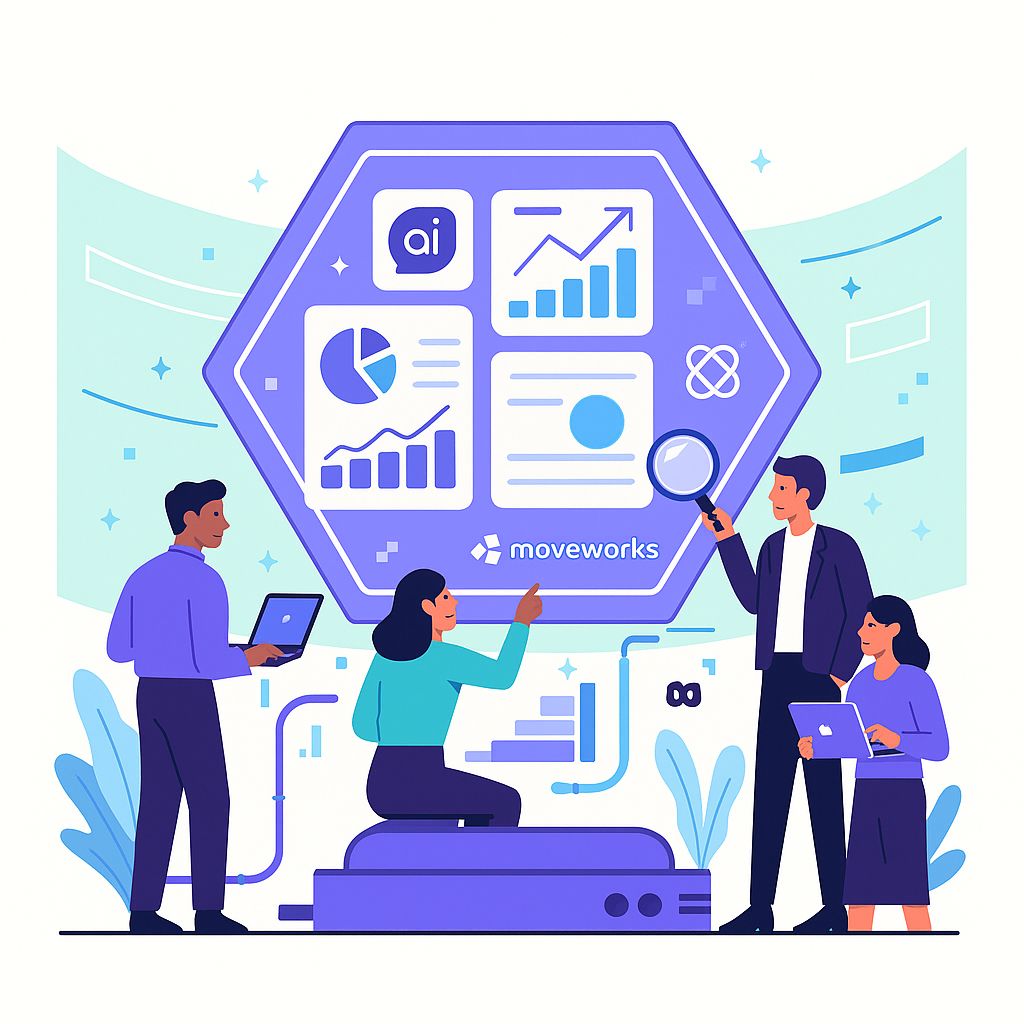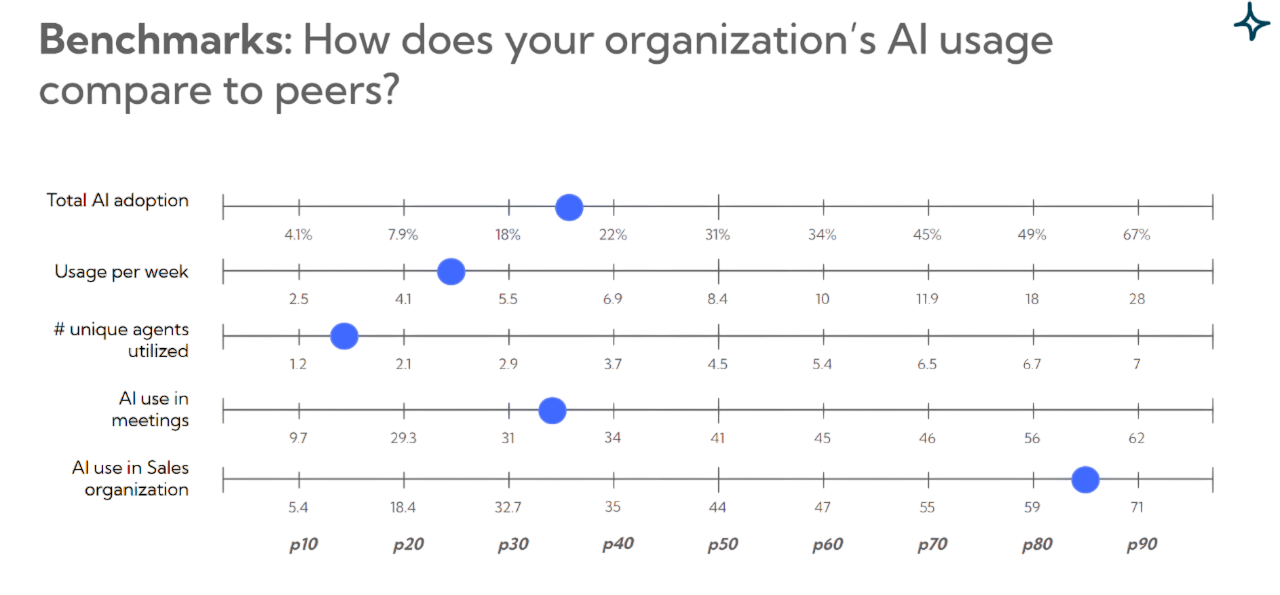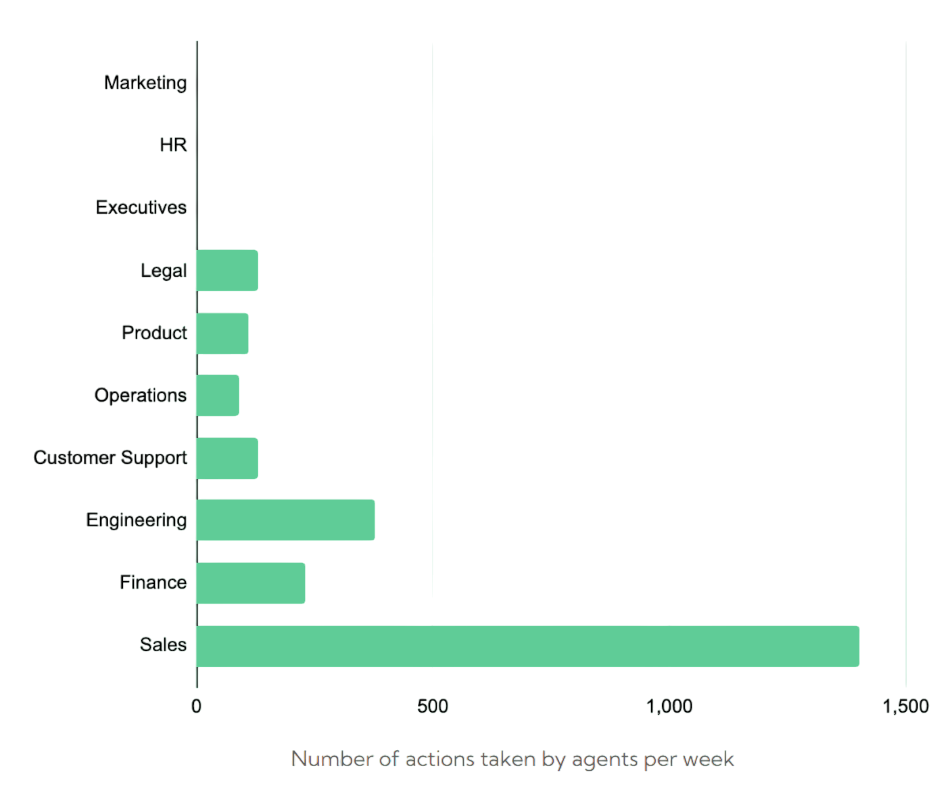
Artificial intelligence is changing the way employees get support. Tools like Moveworks are becoming go-to AI assistants within enterprises, helping people resolve IT issues, find HR answers, and navigate the workplace.
Adoption has been rapid: in just 18 months, Moveworks has grown to nearly 5 million users, with approximately 90% of enterprise customers rolling it out company-wide. But here’s the catch: simply launching an AI assistant doesn’t guarantee success. The real value lies in when employees actually utilize it and when leaders understand how they use it.
That’s where usage insights come in. Tracking how employees interact with Moveworks reveals whether the tool is widely adopted or sitting idle, the types of questions employees ask, and how effective the assistant is in solving problems.
In this blog, we’ll explore:
Gaining visibility into employee usage of Moveworks yields multiple benefits. First and foremost, it quantifies adoption – answering the fundamental question: are employees actually using the AI assistant? Adoption rate is a critical metric for success.
That’s why tracking Moveworks usage is so important. It doesn’t just show whether the tool is working, but also reveals how it’s shaping the employee experience, where improvements are needed, and how it contributes to long-term business goals.
Below are the key reasons why tracking Moveworks AI usage truly matters.
1. Measuring Adoption and ROI
The first question any leader asks is: Are employees actually using the assistant? Adoption rate is a critical success metric. As more employees adopted Moveworks, IT ticket volumes decreased significantly, freeing up service desk teams and improving resolution times. The takeaway: the more people use the AI, the more value it delivers in cost savings, productivity, and faster support.
2. Proving Value to Stakeholders
Executives and budget owners want hard evidence. Usage insights make the impact clear—like “Moveworks resolved X thousand issues last quarter” or “Y% of employees rely on the assistant for support.” Many companies report 70–90% engagement, and sharing those figures builds trust and buy-in. Benchmarking also helps: if peers show 35% adoption and your org is at 15%, that’s a clear sign to step up engagement efforts.
3. Driving Continuous Improvement
It’s not just about how many employees use the AI, but how they use it. Usage data also highlights underutilized features or departments with low adoption, signaling where more training, communication, or better answers are needed. These insights are gold for IT and people analytics teams.
4. Strengthening Governance and Security
There’s also a risk dimension. Research shows 57% of employees paste sensitive data into public AI tools, exposing companies to compliance and security issues. A well-adopted AI assistant like Moveworks reduces that risk by giving employees a safe, approved option. But to ensure this, organizations must monitor usage closely and identify gaps where employees might turn elsewhere.
Getting employees to embrace an AI assistant takes more than just rolling it out. Adoption grows when the tool is visible, trusted, and clearly helpful in daily work. Below are the best practices that make the biggest difference:
By following these best practices – from strong communication and integration to continuous improvement and a culture of trust – organizations can significantly boost the adoption and effective use of Moveworks AI. High usage doesn’t happen by accident; it’s cultivated by removing barriers and motivating people to embrace new ways of working. Over time, as the AI becomes a trusted “coworker” that reliably helps employees, adoption will sustain itself through word-of-mouth and the natural preference for easier solutions.
While Moveworks includes built-in analytics for its assistant, many organizations complement this with dedicated workplace analytics platforms to gain a more complete view. Worklytics is one such solution, designed specifically to measure AI adoption and connect it directly to organizational productivity. By integrating seamlessly with workplace tools such as Slack, Microsoft 365, and ticketing systems, Worklytics automatically captures how employees are using AI assistants like Moveworks. This removes the need for manual surveys or guesswork and provides real-time, continuous intelligence on adoption patterns.
One of Worklytics’ biggest advantages is its ability to aggregate AI usage data across multiple platforms. Many companies are rolling out more than one AI tool, from enterprise chatbots to coding assistants to productivity features built into Office apps. Without a consolidated view, it is difficult to see how these solutions work together across the organization.
Worklytics solves this by serving as a central AI adoption dashboard. It can monitor usage of Moveworks, ChatGPT Enterprise, Microsoft Copilot, Atlassian AI, and many others, bringing the data into a single platform. This makes it easy to analyze how different teams are adopting different tools and to identify strengths and gaps.
For example, a company might see that Sales relies heavily on Moveworks for IT and HR requests, while Engineering is adopting GitHub Copilot extensively. Another department may show little AI engagement at all. Having these insights side by side enables leaders to craft a coherent AI enablement strategy instead of treating each tool in isolation.
Worklytics does more than just aggregate usage data. It introduces benchmarking and advanced analytics that provide a richer perspective. Organizations can compare their AI adoption rates to industry peers, making it possible to understand whether a 50 percent usage rate is ahead of or behind the curve.

The platform tracks critical metrics such as activation rates, usage frequency, and correlations with productivity outcomes. It can reveal not only who is using AI, but how that usage translates into measurable results. For instance, it may highlight that teams with higher adoption resolve tickets faster or experience fewer after-hours support escalations.

Equally important, Worklytics emphasizes privacy and compliance. All data is anonymized and aligned with standards such as GDPR and CCPA. This means companies get the intelligence they need without compromising employee trust. The insights are presented in intuitive dashboards that IT, HR, and business leaders can access directly. These dashboards allow filtering by team or role, goal setting and progress tracking, and identification of high-adopting “power users” whose best practices can be replicated across the organization.

In practice, combining Worklytics with Moveworks’ native analytics creates a comprehensive view of AI’s impact. Moveworks’ own dashboards provide deep insight into how employees interact with the assistant itself, while Worklytics expands the lens to include comparisons across tools and correlations with other collaboration and productivity metrics.
For example, Moveworks may show how many employees reset passwords or opened HR requests through the assistant. Worklytics can then place those specifics in a broader context, showing how teams that use Moveworks heavily also achieve faster resolution times or submit fewer repetitive support tickets. This correlation highlights the tangible business impact of AI adoption and strengthens the case for further investment.
By consolidating information from multiple systems, Worklytics eliminates data silos and gives leaders a single, reliable source of truth for AI adoption. The result is a holistic, data-driven view of how AI is transforming work across the enterprise.
Ultimately, the purpose of analytics is not just to measure usage but to empower better decisions. Whether an organization relies on built-in dashboards or an advanced platform like Worklytics, the goal is to move from raw data to actionable insights.
Understanding exactly how employees engage with AI enables leaders to refine rollout strategies, tailor the assistant to employee needs, and focus enablement efforts where adoption is lagging. In a data-driven culture, this creates a feedback loop where insights lead to targeted improvements, which then fuel higher adoption and greater productivity gains.
With the right combination of Moveworks and Worklytics, organizations can turn AI initiatives from small trials into enterprise-wide successes that reshape the employee experience and drive measurable outcomes.